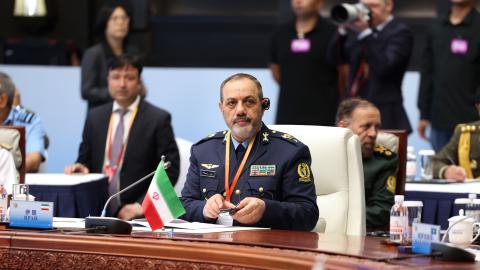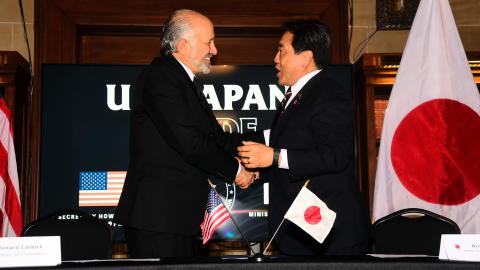I devoted my August 16 and August 23, 2010, NPF essays to criticizing the Obama Administrations flawed report on Adherence to and Compliance with Arms Control, Nonproliferation, and Disarmament Agreements and Commitments (a.k.a. the Noncompliance Report, or NCR). Lest readers think I only take aim at bad American compliance analysis, however, I have now read the official English-language version of the Russian Federations recent publication on purported American violations The Facts of Violation by the United States of its Obligations in the Sphere of Nonproliferation of Weapons of Mass Destruction and Arms Control and its quite a rambling mess indeed.
In fact, the U.S. and Russian publications form quite a contrast. The bad portions of the 2010 U.S. NCR about which my main points of complaint are its evasiveness about Nuclear Nonproliferation Treaty (NPT) interpretation, its incomplete and confusing retreat from previous U.S. conclusions about Irans violation of Article II of the NPT, and its empty incoherence about other countries compliance with nuclear testing moratoria are only small parts of a long and otherwise generally creditable U.S. document. By contrast, the Russian report, if one can really call it that, is never more than a dogs breakfast of the sort of politically-driven playground tit-for-tat one is more used to seeing from Iranian officials. (Were in violation of the NPT? Oh yeah? Well, youre in violation of the NPT. So there!) Moscows document is as hard to follow as it is tendentious, and seldom offers anything approaching real compliance analysis.
I wont bore NPF readers with a detailed account of the numerous, often very gross U.S. violations alleged in the Russian document, or with a discussion of their merits: American officials are more than capable of fending for themselves in this regard. In light of this websites recent discussion of the history of the U.S. NCR and the emphasis placed, in recent U.S. editions, upon offering explanations of the legal obligations in question as well an analysis of each countrys compliance with them, however, its worth making a few points about the type of analysis offered or, more accurately, not offered in the new Russian publication.
Significantly, little if any effort is made in the Russian document to describe just what the obligations actually are that the United States is said to have violated, or how. Its characteristic approach is to set forth some claims of fact, the simply to declare that they violate something. Content to offer at the end a bare, sweeping conclusion that the above facts show that the United States commits numerous, often very gross, violations of existing agreements on disarmament and nonproliferation, the Russian authors apparently felt little obligation (or perhaps were simply unable) actually to explain their reasoning.
The document alleges, for example, that British tests of submarine-launched ballistic missiles constitute a U.S. violation of the START agreement of 1991 to which Britain is not a party, and that U.S. anti-ballistic missile testing targets violate the Intermediate-range Nuclear Forces (INF) Treaty of 1987. Just what provisions of these treaties are violated however and why is not explained.
In contrast to the U.S. NCR, there is scarcely a trace in the Russian document of actual compliance analysis. If the Kremlin did any, it isnt willing to explain its reasoning or in most cases even to steer the reader to the specific provisions in question. All we are offered is a series of conclusory statements. In the realm of nuclear nonproliferation, moreover, the Russian document doesnt even actually claim any violation to have occurred: it just recounts what it says are some facts relating to lost radiation sources. Even if we are to trust the Kremlins account of these events, therefore, one must infer that Russian compliance analysts found themselves at a loss to explain how these events violated any nonproliferation agreement to which the United States is a party.
(Incidentally, we are also told that the United States constantly commits export control violations of some unspecified sort, but apparently having to do with U.S. laws rather than any international agreement by supplying military technology to China, Iran, Syria and Libya. What is one to make of this surreal claim of purported American military sales to these traditional clients of the Russian arms industry?)
Some discussions in the Russian document are simply self-contradictory to the point of incoherence. In a discussion of U.S. compliance with the Biological and Toxin Weapons Convention (BTWC), for instance, the publication complains that with regard to biological agents, the provisions of U.S. law are routinely violated. Or perhaps not. The Kremlin also notes, however, that U.S. authorities have repeatedly thwarted attempts at illegal exports of equipment and materials intended for microbiological and biotechnological research, as well as pathogenic microorganisms. (For some reason, the Russian authors seem unhappy with this.) The reader is also simultaneously told that the United States is in violation of Article IV of the BTWC and that America is not in breach of its obligations (emphasis added) under the the Convention, and that Washington is in fact supportive of the importance of the BTWC. Ones head spins.
It is hard to tell what to make of this stream-of-conciousness discussion, but it doesnt look much like compliance analysis, and assuming that this official English-language version is a decent translation of the Russian original one is not left with the impression that the Kremlin devoted much intellectual candlepower to the effort in any event. It was apparently felt enough merely to allege myriad U.S. violations in generally vague terms. Perhaps Kremlin officials reasoned that if they created enough smoke, observers would conclude that there had to be a real fire somewhere. (Politically, of course, such tactics often succeed. Analytically, however, they are a travesty.)
It is not clear yet whether the Obama Administration will offer any response to this Russian publication, but as I noted above, U.S. officials surely need no help from me in defending Americas (good) record of compliance with arms control and nonproliferation agreements. I mention the Kremlin document in this essay, however, in order to re-emphasize how important it is that compliance analysis provide both legal explication and a clear account of the reasoning behind conclusions. This Russian document is a classic example of what readers will not or at least should not find credible.
The Russian publication is a document designed to engender and to exploit confusion between the mere allegation of a violation and its persuasive demonstration. As such, it is, in a backhanded way, an advertisement for the sort of detailed discussion and analysis that American officials began to offer in the U.S. NCR in the early 2000s. If compliance analysis is undertaken, as it should be, in order genuinely to persuade, and to provide a solid foundation for policy decisions rather than simply to malign its targets and offer mud-slinging media talking points such analysis has an obligation to be detailed, clear, and demonstrably rooted in both factual and legal argument.
This is not a point unique to compliance analysis, of course. As the U.S. Declaration of Independence makes clear in a passage egregiously (but revealingly) misunderstood by Vice President Joe Biden, who seems to have taken it not as a call to explain the distinctive merits of American policy choices but rather to conform them to the views of foreign audiences a decent respect [for] the opinions of mankind requires that we should declare the causes of the positions we take. In compliance analysis, as elsewhere, we owe others the respect of making clear to them why we believe what we believe.
The Russians have manifestly failed this test, but the very egregiousness of their example should offer lessons to everyone who works on compliance analysis not least in the Obama Administration, which chose to back away from clarity and intellectual accountability in the NPT section of the most recent U.S. NCR. This is no time to shirk analytical honesty and rigor in favor merely of opaque and conclusory allegation. Let the Russians traffic in that debased coinage; we need not follow them.














